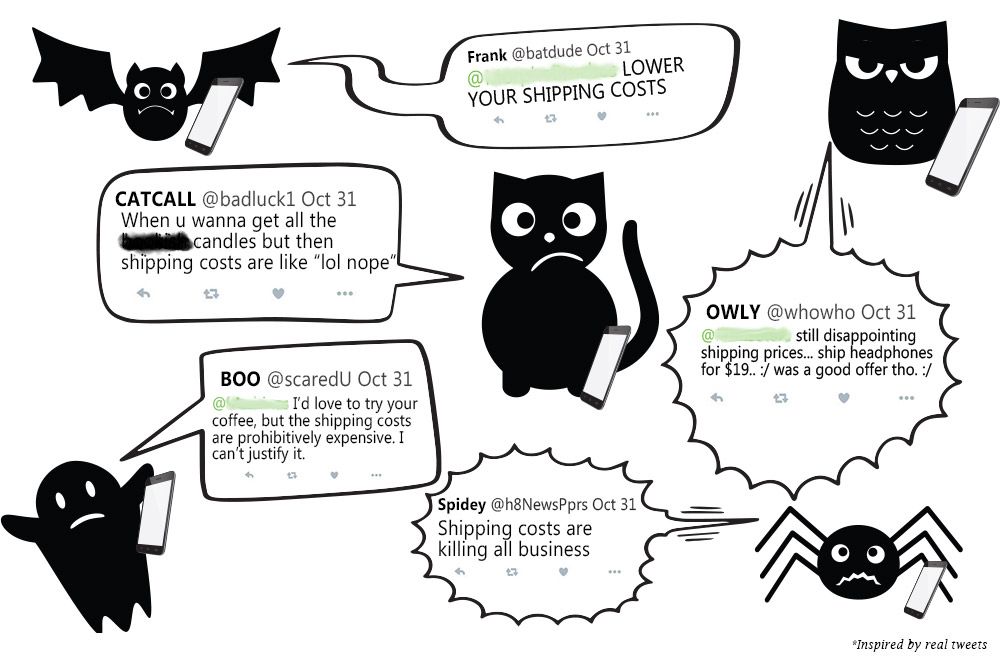Consumers today are demanding faster and more affordable delivery options from retailers, and they have many methods at their disposal to hold retailers accountable for negative experiences. Online shoppers are very vocal… or should we say “type-happy”, and frustrated online shoppers will not only share experiences with family and friends, but also on social media. With the growth of mobile comes the rise of social media, which makes it easier than ever for shoppers to share both negative and positive shipping experiences with other social consumers.
As OSM Worldwide says, “Retailers cannot afford for negative feedback on social media as 46% of consumers turn to popular networks when making purchasing decisions. With 1.65 billion monthly active Facebook users, 400 million monthly active Instagram users and 310 million monthly active Twitter users, bad feedback can reach an immense number of consumers across social networks.”
For example, of online shoppers who would contact customer service when an item arrives one day late, two-thirds would still express frustrations to friends and family. Eighteen percent would express their frustrations on social media. Retailers don’t want this kind of word of mouth.
But not only do you need to ensure your packages get to your customers on-time, you also need to make sure they aren’t spending a fortune on shipping costs. In fact, the top reason why US consumers abandon online shopping carts is that the cost of shipping was too high. If a potential customer finds an item she likes on your site, gets all the way to the payment process and finds out how much you charge for shipping (which usually isn’t pretty), you’ll see a whole lotta this:

Earn customer loyalty with these 4 tips
Ouch! With so many consumers listening in on social media, companies need to use it to their advantage and create social advocates instead of brand foes. Here are 4 tips on how to do so:
- Never assume. You may think you know what your customers want, but what if you’re wrong? You could be focusing on the wrong omnichannel strategies, discounts, special offers and shipping options. The customer should always come first, so do your research and keep your customer top of mind.
- Always deliver. When you make promises to your customers, make sure you’re executing. If you have a free shipping option, make sure there are no strings attached. If you offer 2-day shipping, make sure you have the capacity to get your products shipped on-time. Nothing is worse than empty promises.
- Offer more. Today’s consumers love having options and they expect you to stay on-top of your game by implementing those options. If your product is similar to a competitor’s, you need to make sure that you’re going above and beyond for your customers by offering choices that your competitors don’t yet have. Standing out is key.
- Stay connected. If you have an unhappy customer, always follow up with him or her. People like brands that are transparent and appreciate when companies actually listen to their customers to try to fix their problems. Whether a customer sends an unhappy email or posts about a negative experience on social media, make sure to reach out and listen to what he or she has to say. More often than not, your happy customer will tweet something positive about your support.
Do all of this, and you’re sure to see an improvement in social interactions.

See? Aren’t those tweets a whole lot friendlier? Imagine how your brand could stand out if your customers are generating positive posts about your company in a world where 17.4% of consumers complain to brands using social media on a weekly basis. Imagine how you could turn your social audience into believers when 32.8% of brands never offer a response to their consumers’ complaints on social media (that’s up to 289 million unanswered complaints). It’s time to stop assuming and start delivering.
Offer more, stay connected and get going, future social star!
Sources:
http://www.osmworldwide.com/news-and-insights/online-shopper-expectations

 Back to Blog
Back to Blog






